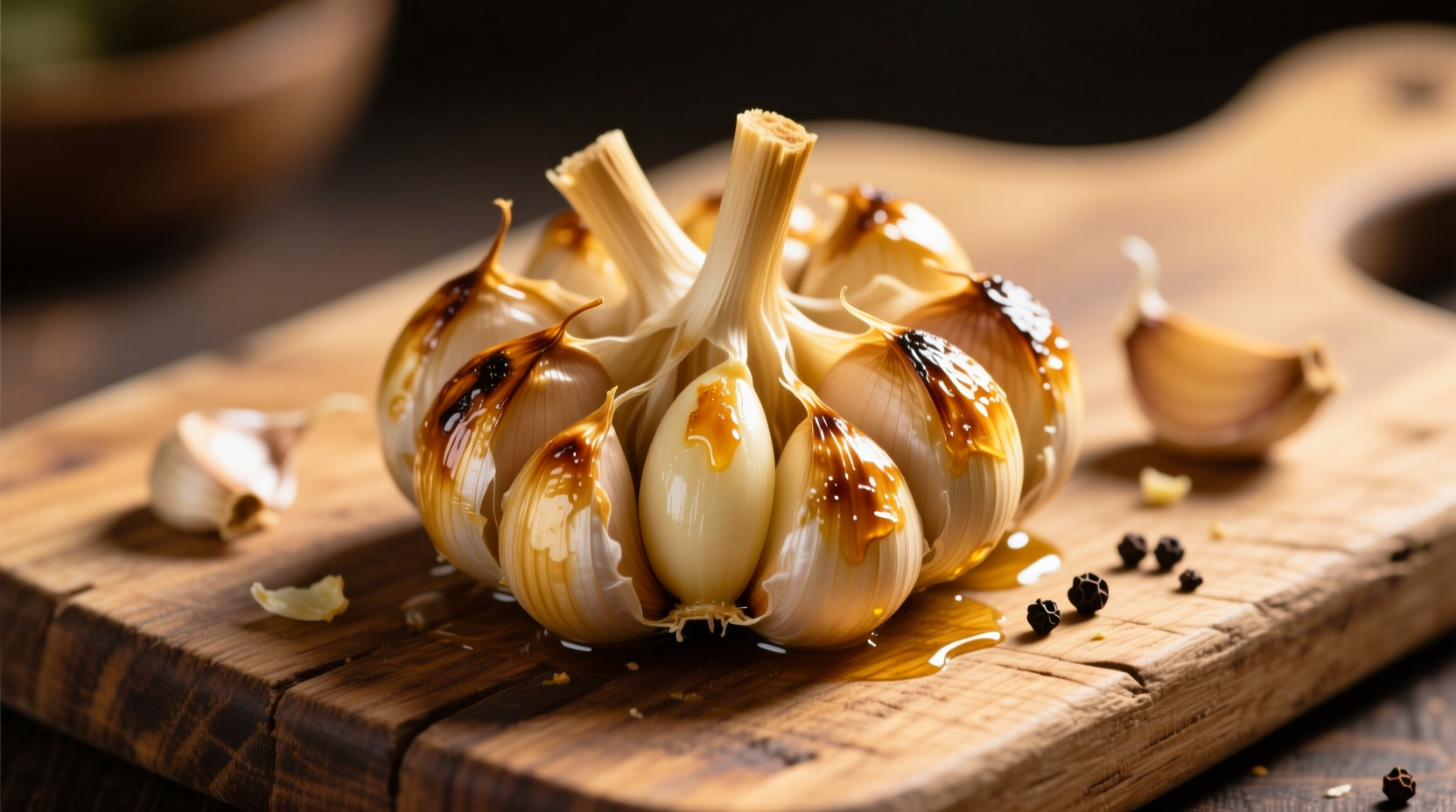Roasting a whole head of garlic unlocks a flavor transformation that turns pungent cloves into sweet, buttery delights. This kitchen technique requires minimal effort but delivers maximum culinary impact, making it essential for both beginner cooks and seasoned chefs. Unlike raw garlic's sharp bite, roasted garlic develops complex caramelized notes that enhance sauces, spreads, and main dishes without overwhelming other ingredients.
Why Roasting Transforms Garlic's Flavor Profile
When exposed to heat, garlic undergoes the Maillard reaction and caramelization—chemical processes that break down harsh sulfur compounds while developing rich, nutty flavors. According to research published in the Journal of Agricultural and Food Chemistry, roasting reduces allicin (garlic's primary pungent compound) by up to 90% while increasing beneficial antioxidants.
| Raw Garlic Compound | After 40 Minutes Roasting | Flavor Impact |
|---|---|---|
| Allicin (pungent) | Reduced by 85-90% | Sharp bite disappears |
| Sulfur compounds | Transformed to sulfides | Sweet, buttery notes emerge |
| Polyphenols | Increased by 25% | Enhanced antioxidant activity |
This flavor evolution follows a predictable timeline:
Garlic Roasting Timeline
- 0-15 minutes: Moisture evaporates, cloves soften slightly
- 15-25 minutes: Initial browning begins at edges, mild sweetness develops
- 25-35 minutes: Optimal caramelization—golden brown cloves with creamy texture
- 35-45 minutes: Deep browning, intense nutty flavor (risk of burning beyond this point)
Essential Tools and Preparation
You need just three basic items for perfect roasted garlic:
- Fresh garlic heads (firm bulbs with tight skins)
- Olive oil (extra virgin for best flavor)
- Aluminum foil or small ovenproof dish
Follow these preparation steps for consistent results:
- Preheat oven to 400°F (200°C)—this temperature balances caramelization without burning
- Cut ¼ inch from the top of each garlic head to expose cloves
- Drizzle 1-2 teaspoons olive oil over exposed cloves, letting it seep between layers
- Season lightly with sea salt (optional: add fresh thyme or rosemary)
- Wrap tightly in foil or place in covered dish

Perfect Roasting Technique
Timing varies based on garlic size and oven accuracy. For standard medium heads:
- 35-40 minutes at 400°F yields creamy, golden cloves
- 45-50 minutes creates deeper caramelization for robust dishes
Check for doneness by gently squeezing the bulb—if cloves feel completely soft and yield to pressure, they're ready. Over-roasted garlic becomes dry and bitter, while under-roasted retains sharpness. The ideal texture should resemble softened butter, easily squeezable from the skin.
When Roasted Garlic Works Best (and When It Doesn't)
Understanding context boundaries helps maximize roasted garlic's potential:
- Ideal applications: Mashed potatoes, salad dressings, pizza toppings, bread spreads, pasta sauces
- Limited effectiveness: Raw applications like vinaigrettes where sharp garlic notes are desired
- Not recommended: Dishes requiring garlic's antimicrobial properties (roasting reduces these)
Creative Uses Beyond the Obvious
Professional chefs utilize roasted garlic in unexpected ways:
- Compound butter: Blend with softened butter and herbs for steak topping
- Infused oils: Steep roasted cloves in warm oil for dipping bread
- Vegetable enhancer: Mix into roasted carrots or Brussels sprouts
- Breakfast boost: Stir into scrambled eggs or omelets
- Meat marinade base: Combine with mustard and herbs for chicken or pork
Storage and Shelf Life Guidelines
Proper storage maintains quality and safety:
- Refrigerate in airtight container for up to 10 days
- Freeze cloves in oil for up to 6 months (ideal for future sauces)
- Never leave at room temperature more than 2 hours
According to USDA food safety guidelines, roasted garlic stored properly maintains quality while minimizing bacterial growth risks associated with low-acid foods.
Common Mistakes to Avoid
- Using old garlic: Sprouted or soft bulbs won't caramelize properly
- Insufficient oil: Causes drying and uneven roasting
- Incorrect temperature: Below 375°F yields underdeveloped flavors; above 425°F risks burning
- Skipping the foil wrap: Essential for steaming effect that softens cloves
Troubleshooting Your Roasted Garlic
Fix these common issues:
- Bitter taste: Over-roasted—reduce time by 5-10 minutes next batch
- Still sharp: Under-roasted—increase time or raise oven temperature 25°F
- Dry cloves: Not enough oil—use 50% more next time
- Uneven results: Rotate pan halfway through cooking











 浙公网安备
33010002000092号
浙公网安备
33010002000092号 浙B2-20120091-4
浙B2-20120091-4